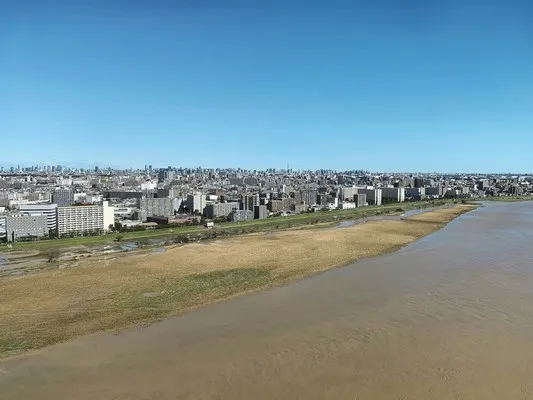Table of Contents
- What Is Human Geography?
- Key Concepts in Human Geography
- Human Geography and the Environment
- Cultural Geography: Understanding Human Identity and Diversity
- Economic Geography: Analyzing Spatial Patterns of Economic Activity
- Urban Geography: The Study of Cities and Urbanization
- Political Geography: Power, Territory, and Boundaries
- The Importance of Human Geography Today
Human geography, a vital subfield of geography, delves into the complex relationship between humans and their environments. Unlike physical geography, which focuses on natural landscapes and processes, human geography explores the social, cultural, political, and economic activities that shape human experiences and interactions with space and place. In this primer, we’ll explore the key concepts, theories, and applications of human geography, with a focus on why understanding human geography is essential for analyzing contemporary social issues.
What Is Human Geography?
Human geography is the study of how people and their activities are distributed across the Earth’s surface. It examines how cultures, communities, economies, and political structures interact with and are influenced by the geographical spaces they inhabit. Geographers who study human geography are interested in understanding patterns of human activity, spatial relationships, and the various processes that drive human movement, urbanization, and landscape change. While often interdisciplinary, human geography provides valuable insights into the socio-spatial dynamics that shape everyday life.
The Scope and Focus of Human Geography
Human geography is both a broad and detailed field, covering diverse areas such as:
- Cultural Geography: How cultures develop and spread, including languages, religions, traditions, and identity.
- Economic Geography: The spatial distribution of economic activities, resources, and industries, and how these factors affect and are affected by geography.
- Urban Geography: The study of urban spaces, city planning, infrastructure, and issues like gentrification, urban sprawl, and housing.
- Political Geography: Analysis of spatial dimensions of political processes, borders, territories, and issues of sovereignty and governance.
- Social Geography: Focuses on social structures, inequalities, and spatial differences in society, such as residential segregation and access to services.
Each branch emphasizes different aspects of how human activity interacts with physical spaces. Together, they form a holistic view of the social landscapes that define human experiences globally.
Key Concepts in Human Geography
Several core concepts are fundamental to understanding human geography. These concepts help frame how geographers examine human-environment interactions, analyze patterns, and identify significant social, economic, and political trends.
Space and Place
In human geography, space and place are foundational concepts.
- Space refers to abstract geographical locations, focusing on how areas are organized and interconnected. Space is often neutral, described by measurable boundaries, distances, and relationships between objects or places.
- Place, in contrast, is imbued with meaning. It represents spaces that hold significance for people due to their history, emotional connections, or cultural identity. For example, a home is more than a physical location; it’s a place of comfort, memory, and identity.
The distinction between space and place is essential in human geography because it reveals how different people and cultures attach different meanings to specific areas. Place-making, or the process of attributing meaning to a location, is a central focus in many human geography studies.
Scale
Scale refers to the level at which geographical analysis is conducted, such as local, regional, national, or global.
- Local Scale: Examines individual communities or neighborhoods, often focusing on cultural practices, social networks, and community-level issues.
- Regional Scale: Explores broader areas that share similar characteristics, such as economic activity or climate.
- Global Scale: Looks at worldwide patterns, such as migration flows, global economies, and transnational cultural exchanges.
Understanding scale is critical because human activities and social processes often operate differently depending on the level of analysis. For instance, environmental policies may have regional implications, while global economic shifts affect local job markets.
Diffusion and Movement
Diffusion refers to the way ideas, cultural practices, goods, and people move across spaces. It is particularly relevant in studying globalization, where cultural practices and economic goods are shared and adapted globally. Geographers examine different types of diffusion:
- Relocation Diffusion: Movement of people brings new ideas and practices to different places.
- Contagious Diffusion: Ideas spread rapidly from person to person within close proximity.
- Hierarchical Diffusion: Ideas or innovations spread from larger, influential centers to smaller, less influential places.
Movement, meanwhile, is integral to human geography because it encompasses not just the physical movement of people but also flows of goods, information, and cultural practices. Understanding these patterns helps geographers assess the impacts of migration, trade, and communication on different regions.
Human Geography and the Environment
Human geography and environmental studies intersect in multiple ways. Human activities shape the environment, and environmental changes, in turn, influence human societies. This interdependence has led to an increased focus on environmental geography, which examines issues like climate change, resource management, and sustainability.
Human-Environment Interaction
Get the full article AD FREE. Join now for full access to all premium articles.
View Plans & Subscribe Already a member? Log in.





